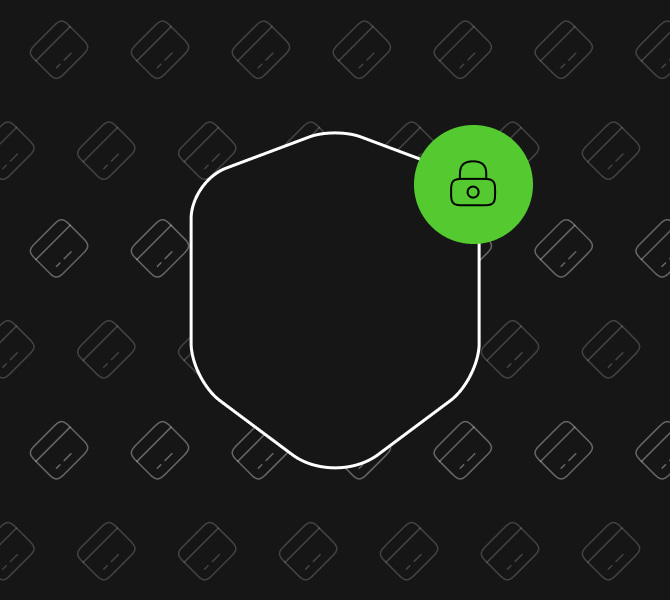The Brazilian retail sector is on the rise. According to a study published by the E-commerce Brasil portal at the end of 2024, Brazilian retail revenue is expected to jump from BRL 3.2 trillion in 2023 to BRL 3.8 trillion by 2027.
Taking a closer look at e-commerce, projections for the same period show an increase from BRL 349 billion to BRL 557 billion. In addition to total revenue, the study indicates that e-commerce’s share of the Brazilian retail market is projected to increase from 11% to 15% by 2027.
It’s clear that more Brazilians are becoming entrepreneurs, and to grow their businesses, they turn to digital platforms and sell their products and services via e-commerce. Just as digital entrepreneurs need to learn about sales techniques, marketing tactics, team and logistics management, it is essential that online merchants stay alert to credit card fraud targeting e-commerce platforms.
Is your e-commerce business protected against online fraud?
Protecting your business from fraud is not only financially crucial; it is also key to maintaining your brand’s reputation. In this article, we’ll introduce the main types of fraud that can threaten your e-commerce operation and examine the hidden costs of chargebacks, a silent threat to your revenue. Next, you’ll discover PagShield®, a smart solution developed by PagBrasil to protect high-revenue merchants and ensure the security of your online payments.
Data collected about Brazil’s “underground fraud industry” is revealing: according to a study reported by Valor Econômico in 2023, Brazil ranks second in the world for fraud rates. The results were based on transactions processed using Visa cards, analyzing over 2.7 billion purchases.
Specifically in e-commerce, as highlighted by Poder 360 in February 2025, fraud attempts in Brazil’s online retail market totaled BRL 211.6 million in January alone, with over 157,000 fraud incidents recorded.
So, what are the most common fraud schemes concerning today’s merchants and online entrepreneurs? Let’s explore the top tactics used by fraudsters in credit card transactions and their impacts on Brazilian e-commerce businesses.
Friendly fraud
Friendly fraud refers to when someone other than the cardholder, such as a family member or acquaintance, uses the credit card without authorization but with prior access to the card’s information. In such cases, the cardholder notices a transaction they didn’t make and reports it as fraudulent, requesting a refund.
Self-fraud
Self-fraud occurs when a buyer uses their own personal and banking data to complete a credit card transaction, only to later claim they didn’t make the purchase or never received the product or service, seeking to reverse the charge.
Cyberattacks, phishing, and sata leaks
Also known as “card-not-present” (CNP) fraud, techniques such as cyberattacks, phishing, and data breaches demonstrate how fraudsters illegally harvest sensitive information from e-commerce platforms.
Cyberattacks target online stores, taking advantage of security loopholes to access customer data. Once leaked, these data sets are often sold or shared on the dark web, where fraudsters trade in business and consumer data.
Phishing includes various tactics used to trick customers into sharing financial information. For example, fake websites, emails, or text messages are designed to mimic legitimate businesses. These schemes steal customer data and, indirectly, damage the reputation of the legitimate e-commerce sites that are mimicked.
These schemes go beyond compromised data; they also present the risk of identity theft. If the leaked information includes national ID numbers, full names, and other sensitive data, victims may face long-term consequences such as unauthorized bank accounts, criminal activity carried out under their name, and even fraudulent loan requests — all of which may have legal implications.
Credit card testing fraud
Once fraudsters acquire stolen credit card data, their first step is often to “test” the cards. This is typically done for two main reasons:
- To check whether the stolen card is still active by attempting transactions on various e-commerce platforms.
- To make purchases, starting with low-value items, then gradually increasing both the volume and value of transactions over a short period. This pattern can be detected by fraud prevention systems.
It’s a mistake to think this testing is done manually. One reason fraud rates are so high is that many fraudsters use scripts, bots, or malicious code to automate card testing across multiple platforms.
If your e-commerce site becomes a target, you face two major risks: damage to your brand’s reputation due to affected customers, and a sharp increase in chargeback rates.
How chargebacks can damage your business
A chargeback occurs when a cardholder contests a transaction with their issuing bank.
Before diving deeper into how chargebacks relate to fraud, it’s helpful to clarify how they differ from a refund.
Both chargebacks and refunds involve reversing a transaction and returning the money to the customer. However, a refund is initiated directly between the merchant and the customer; it doesn’t always involve the bank.
Refunds may result from customer regret, stock issues, or other logistical problems. In contrast, a chargeback starts when a customer disputes a transaction through their bank or payment app.
This is where the connection to fraud becomes clear: a victim of card fraud will initiate a chargeback to recover funds from unauthorized transactions, especially if the merchant name shown on the statement is unrecognizable. While chargebacks can occur for various reasons, they are most often used to contest fraudulent charges.
How chargebacks can impact your e-commerce?
It’s almost impossible to run an online business without some chargebacks, especially high-revenue merchants. The key is understanding how high chargeback volumes can impact your operation.
Here’s a clear example: Credit card networks monitor a metric called the Chargeback Threshold Ratio (CTR). It’s calculated by dividing the number of chargebacks a business receives by the total number of approved transactions on that card network during the same period. If the CTR reaches or exceeds 1%, card brands may impose fines and other penalties on the merchant. There are exceptions for merchants with low sales volume. In such cases, a high CTR is tolerated as long as the total number of chargebacks remains under 75–100 per month.
PagBrasil’s podcast, PBtalks, features an episode dedicated to chargebacks (available in Portuguese only). We recommend listening to the conversation between PagBrasil CEO Ralf Germer, Patrick Scripilliti (Digital Commerce Expert at TOTVS), and Juliana Duarte (CEO of SetYou, a company that uses PagBrasil’s solutions).
After getting a full understanding of the most common fraud schemes and their real impact, it’s time to explore how to protect your e-commerce operation with cutting-edge fraud prevention technology.
How PagShield® protects your e-commerce from fraud
Designed to streamline merchant operations and protect your business, PagShield® is a fraud prevention tool built specifically for the Brazilian market. PagShield® uses proprietary technology to fight fraud in real time, leveraging insights into your users’ purchasing behavior.
Here are the key features that make PagShield® the ideal choice for securing your online store:
Chargeback reduction
PagShield® employs intelligent learning and behavioral analysis to reduce your chargeback rate by up to 88% without compromising your credit card approval rate, which can remain as high as 98%. Unlike some fraud prevention tools that block legitimate purchases, PagShield® also allows for manual reviews based on customer profiles.
Fraud detection tailored for brazilian e-commerce
PagShield® provides localized protection by verifying the buyer’s provided address and cross-checking it with their IP location.
Next-gen purchase behavior analysis platform
PagShield® helps you understand how users interact with your site using tools like geolocation, IP tracking, device fingerprinting, proxy detection, and velocity checks.
Its algorithm adapts to your business model and identifies suspicious patterns, making fraud detection more precise.
Fast integration and easy setup
Getting started with PagShield® is quick and straightforward. You can enable it by adding a few parameters to your API or iFrame integration and inserting a JavaScript snippet into your site.
The system is fully customizable: You can set approval, review, and rejection thresholds and create allow/block lists for specific customers.
PagBrasil’s Fraud Prevention Team is also available to help analyze your store’s risk profile and provide tailored recommendations at no extra cost.
Real-time solution powered by AI and machine learning
PagShield® uses artificial intelligence to analyze over 4,000 variables, detect fraud patterns, review historical data, and compare your store’s activity with a much broader dataset.
It relies on Konduto’s database, a global company pioneer in using machine learning for online fraud prevention. Like all PagBrasil solutions, PagShield® leverages advanced technology to help your business grow securely.
Trusted by brazilian companies
Here is a real-world example of PagShield® in action. Hear from Juliana Duarte, CEO of SetYou, in the podcast episode mentioned earlier
“After a year with PagBrasil, we scaled our Black Friday sales thanks to a high-traffic product launch page. But such visibility also attracted fraudsters. We had a surge in sales and started facing chargebacks. PagShield® helped us manage it: transactions were pre-approved on the customer’s card, and we could manually review them using PagBrasil’s platform. We checked purchase frequency, transaction value, and customer score before approving or rejecting the sale.”
Make security a strategic priority: talk to PagBrasil
There are many ways to make your online business safer and more trustworthy. These range from enabling two-factor authentication to building a strong and reputable brand.
PagBrasil’s experts are ready to understand your e-commerce challenges and walk you through PagShield® and other available solutions.
Get in touch and discover how to keep your business safe from fraudsters.



